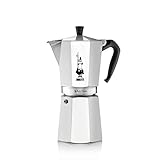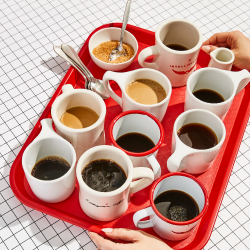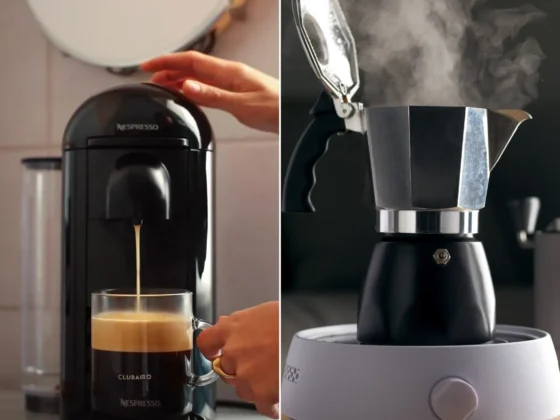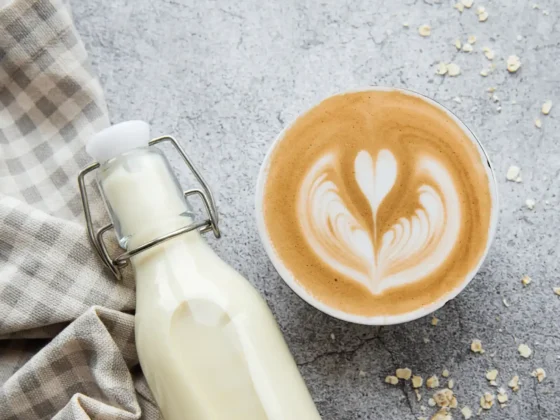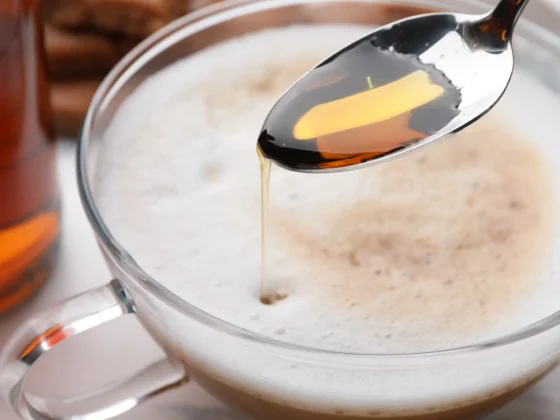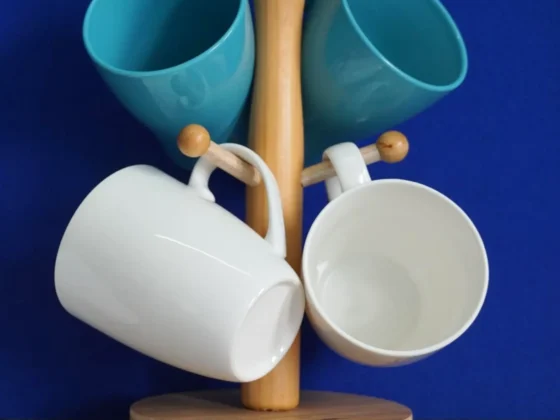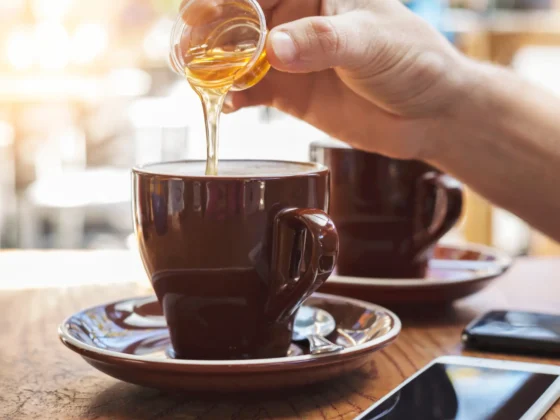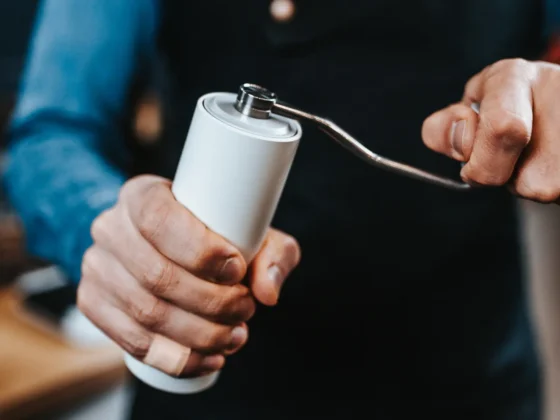Greetings and salutations, welcome to the world of coffee brewing mastery. Here, we shall delve deep into the intricacies of this beloved morning ritual, exploring every nook and cranny of the art and science that goes into creating the perfect cup of freshly brewed coffee. The delightful aroma of a well-brewed cup of coffee has the magical ability to brighten even the groggiest of mornings for millions of individuals worldwide.
This ultimate guide has been crafted to assist you in achieving the pinnacle of coffee brewing perfection, combining knowledge, techniques, and passion to create a flawless experience. We shall embark on an expedition to unravel the mysteries of coffee brewing, examining a multitude of brewing methods, discussing crucial equipment, and divulging expert insights to elevate your coffee game to the next level. From pour-over to espresso, and from grind size to water temperature, we shall leave no stone unturned in our quest for coffee nirvana.
Whether you are an experienced coffee connoisseur or a curious beginner, this comprehensive guide is tailored to your needs. We aim to provide you with the skills and knowledge to master the art of brewing coffee and elevate your morning ritual to the next level. So grab hold of your favorite mug, and let us commence our journey to unlock the full potential of freshly brewed coffee.
Coffee Brewing: Key Takeaway
- Understanding the science of coffee brewing, including coffee bean chemistry, extraction, and water’s role, is essential for a perfect cup of coffee.
- Experimenting with popular brewing methods such as pour-over, French press, and espresso can help find the preferred taste and style.
- Investing in quality equipment like a grinder and coffee maker, and learning expert tips can improve coffee taste at home.
- Developing coffee-tasting skills and exploring coffee cupping and food pairing can deepen appreciation for diverse coffee flavors and aromas.
The Science of Coffee Brewing
Coffee brewing constitutes an amalgamation of artistry and scientific principles. Comprehending the underlying aspects of the brewing process is essential to attain a perfect cup of coffee every single time. In this particular section, we will delve into the intricate science behind coffee brewing, emphasizing the coffee bean’s nature, the chemistry of extraction, and the role played by water during brewing.
Understanding the Coffee Bean
To brew coffee that boasts an abundance of flavor and aroma, comprehending the coffee bean’s intrinsic characteristics is of paramount importance. Coffee beans constitute the seeds of the Coffea plant, typically found enclosed within a fruit resembling a cherry. The market primarily comprises two species of coffee beans: Arabica and Robusta. Arabica beans are renowned for their mild, nuanced, and smooth flavors, while Robusta beans often exhibit stronger, more robust flavors and boast a higher caffeine content.
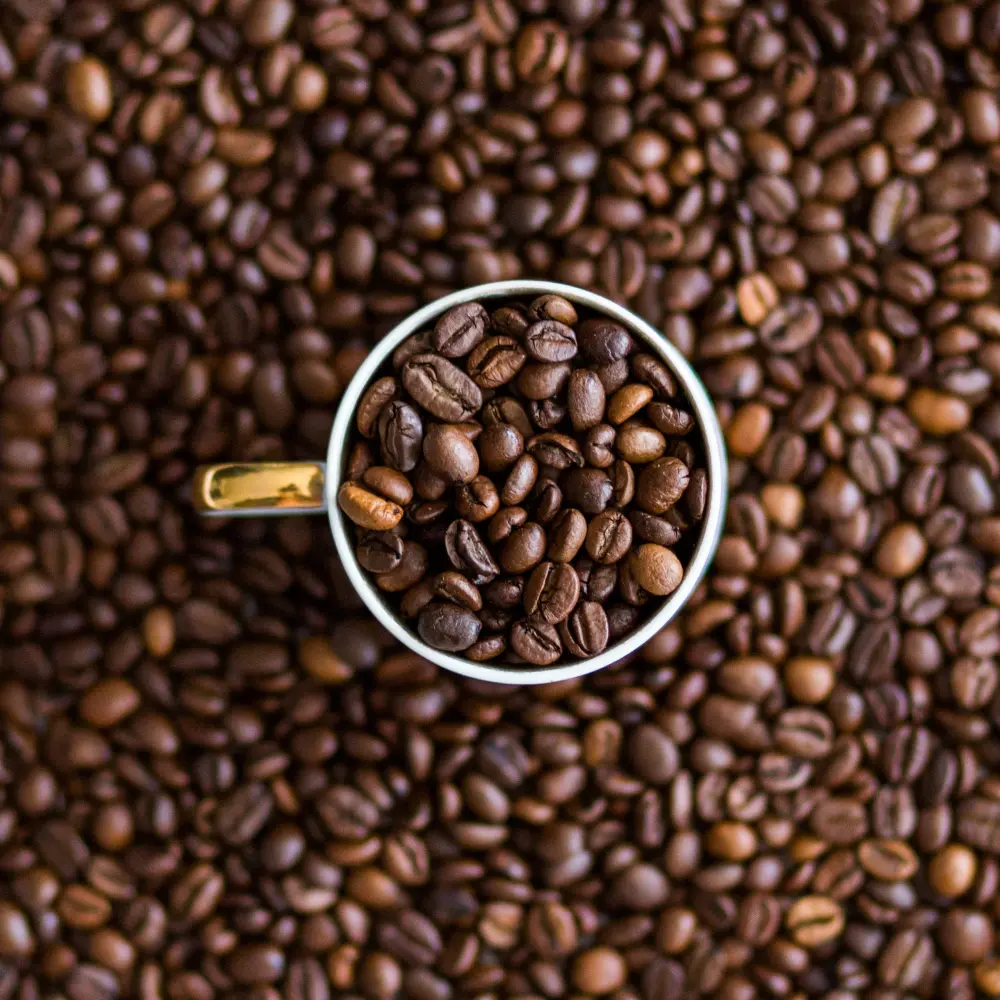
The beans are harvested, processed, and roasted to accentuate their distinctive flavors. Roasting occupies a critical role in the flavor profile of the ultimate brew, with light, medium, and dark roasts each providing unique characteristics. Light roasts tend to possess a higher acidity and fruitiness, while dark roasts offer a more intense, smoky flavor. Familiarizing oneself with the preferred bean and roast type enables the selection of the appropriate beans, thereby optimizing the brewing experience. more acidic and fruity, contrast with the darker roasts that offer a bold, smoky flavor, unique in their essence. A sagacious comprehension of the variety of beans and roasts available is instrumental in selecting the appropriate beans for your desired coffee brewing experience.
The Chemistry of Extraction
The extraction process involves the dissolution of soluble flavors from the coffee grounds into the water. The objective of brewing coffee is to achieve a well-balanced extraction that captures the desirable flavors while avoiding over-extraction or under-extraction.
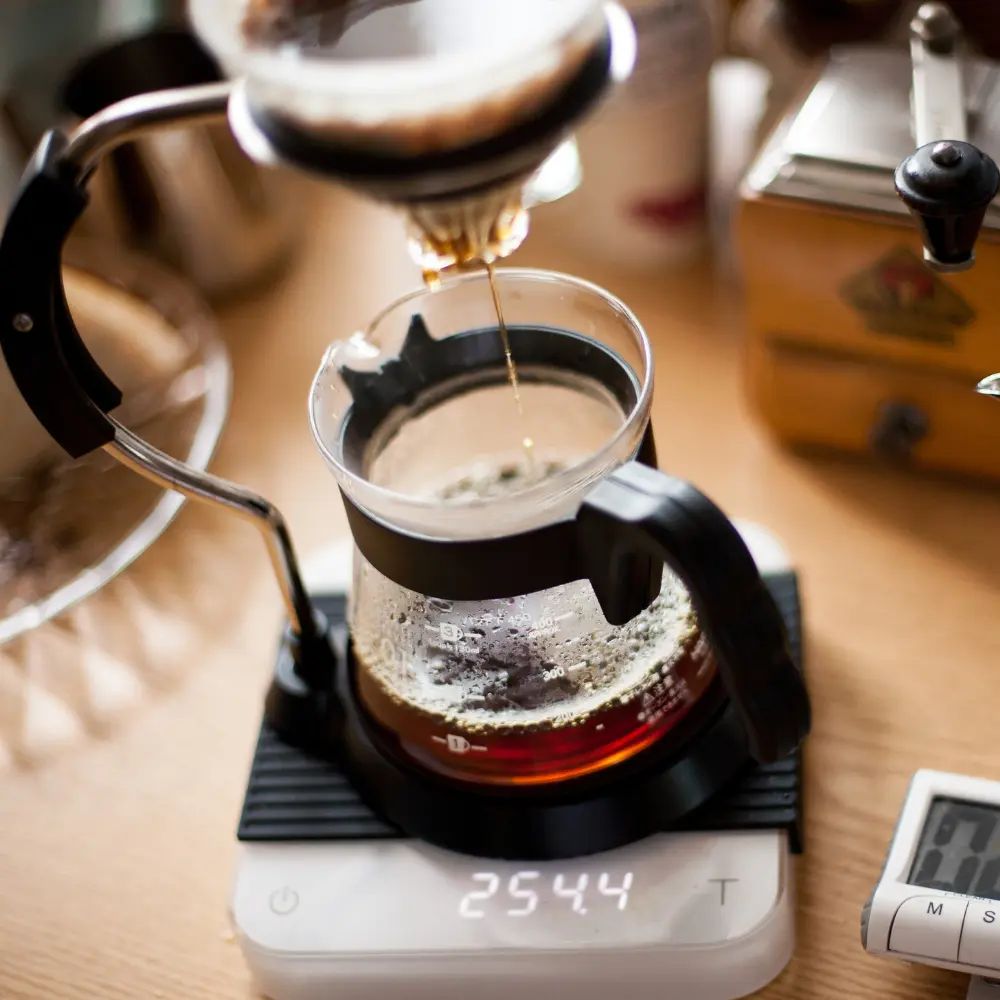
Grind size, brewing method, water temperature, coffee-to-water ratio, and brewing time are several factors that contribute to the extraction process. Achieving a balanced extraction demands a precise balance among these factors. For instance, a finer grind size will result in a faster extraction, while a coarser grind will slow down the process.
A well-extracted coffee cup exhibits a harmonious balance of acidity, sweetness, and bitterness. Over-extracted coffee can taste excessively bitter, while under-extracted coffee may be sour or weak. Understanding and modifying the factors influencing extraction can help brew a well-balanced and flavorful cup of java.
The Role of Water in Brewing
Water constitutes a pivotal component in brewing coffee, as it comprises over 98% of the final cup. The water quality used can significantly influence the coffee’s taste. Ideally, you should use neutral pH water devoid of impurities that could impact the coffee’s flavor.
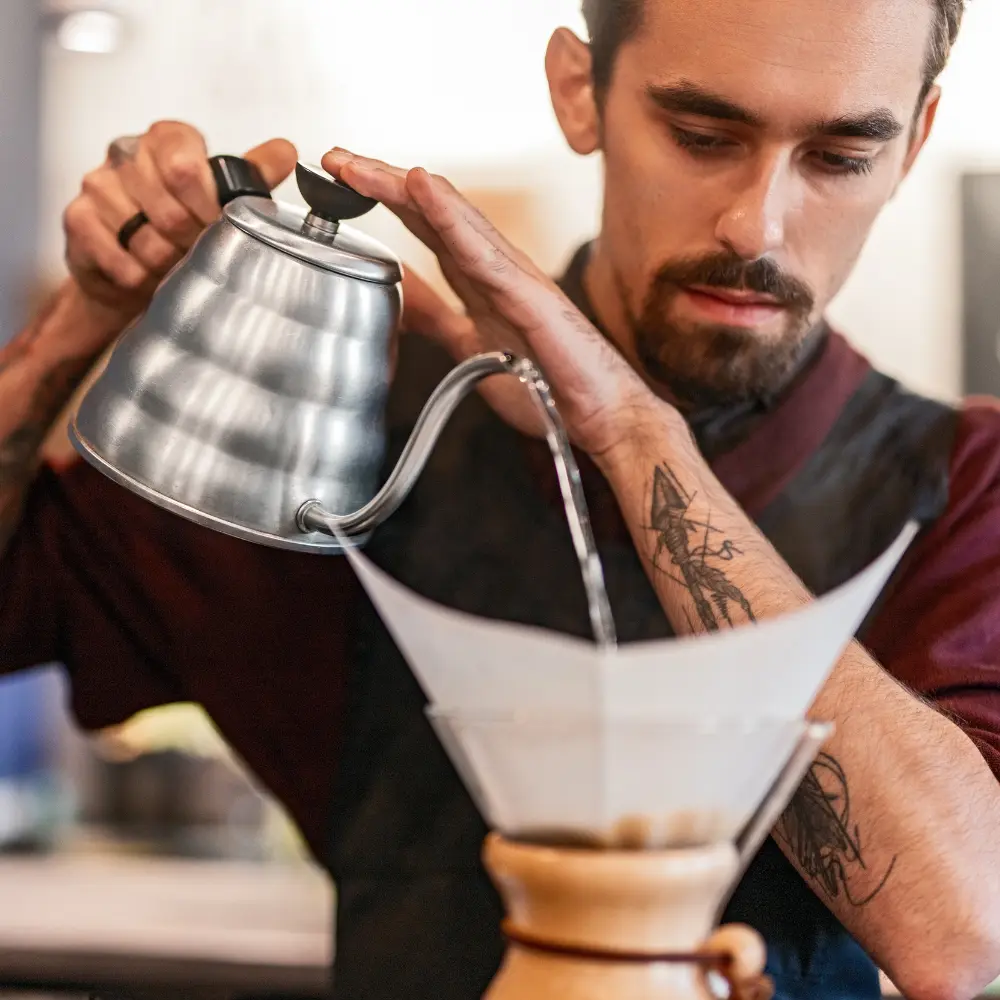
Water temperature also plays a crucial role in the extraction process. The optimum temperature for brewing coffee ranges between 195°F and 205°F (90°C to 96°C). Hot water can over-extract the coffee, resulting in bitterness, while cool water may result in weak or sour flavors.
In addition to water quality and temperature, the coffee-to-water ratio significantly impacts achieving a well-balanced brew. The standard ratio is 1:15 to 1:18, implying one gram of coffee to 15-18 grams of water. However, this ratio may vary based on personal preferences and the brewing method employed.
By comprehending the coffee bean’s nature, mastering the extraction’s chemistry, and acknowledging the water’s role in brewing, one can unravel the secrets underlying coffee brewing science and concoct the perfect cup of coffee every single time.
10 Popular Coffee Brewing Techniques
Venturing out to master the art of brewing coffee can be a stimulating yet intimidating experience due to the numerous brewing methods available, each offering a distinct experience and taste profile. In this section, we will delve into some of the most popular coffee brewing techniques, exploring the equipment, techniques, and traits that differentiate them. Whether you’re searching for a flawless morning kick-start or seeking to broaden your horizons, uncovering these popular brewing methods will enable you to unlock new textures, aromas, and flavors in your quest for the perfect cup of joe.
Pour-Over Brewing: Control and Consistency
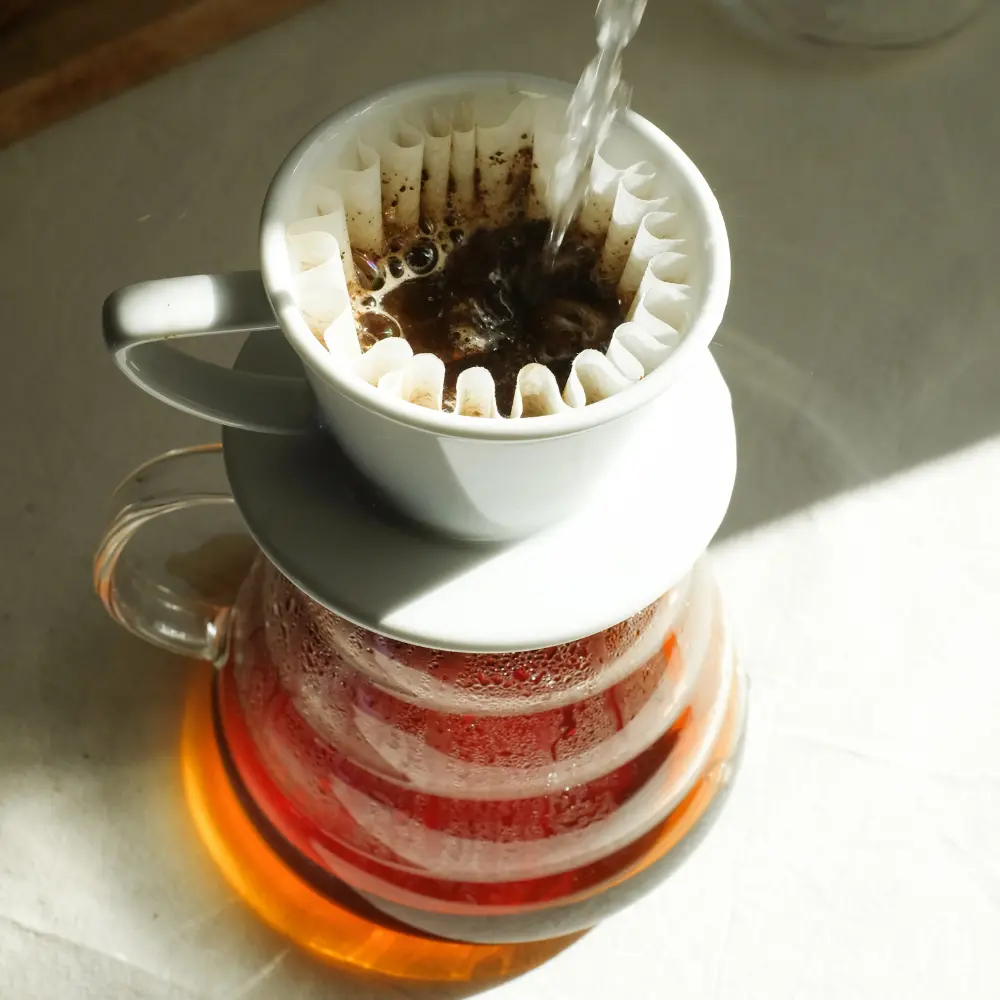
Pour-over brewing is a manual coffee brewing technique that involves pouring hot water over coffee grounds in a filter. This method provides a high degree of control over the brewing process, enabling you to modify variables like water temperature, brewing time, and coffee-to-water ratio. The outcome is a consistent and clean cup boasting bright acidity and nuanced flavors.
Pros:
- Control: The manual nature of pour-over brewing offers the ability to modify different variables, allowing for a fine-tuned brewing process according to personal preferences.
- Consistency: With sufficient practice, the pour-over method can yield a consistently delicious cup of coffee.
- Clean taste: The usage of a paper filter in pour-over brewing eliminates oils and sediment, resulting in a crisp and bright cup of java.
Cons:
- Time-consuming: Pour-over brewing requires a bit more time and attention compared to other methods.
- Equipment: In addition to a pour-over cone and filters, a gooseneck kettle and scale for precise water pouring and measurement may be necessary.
French Press: Flavorful and Rich
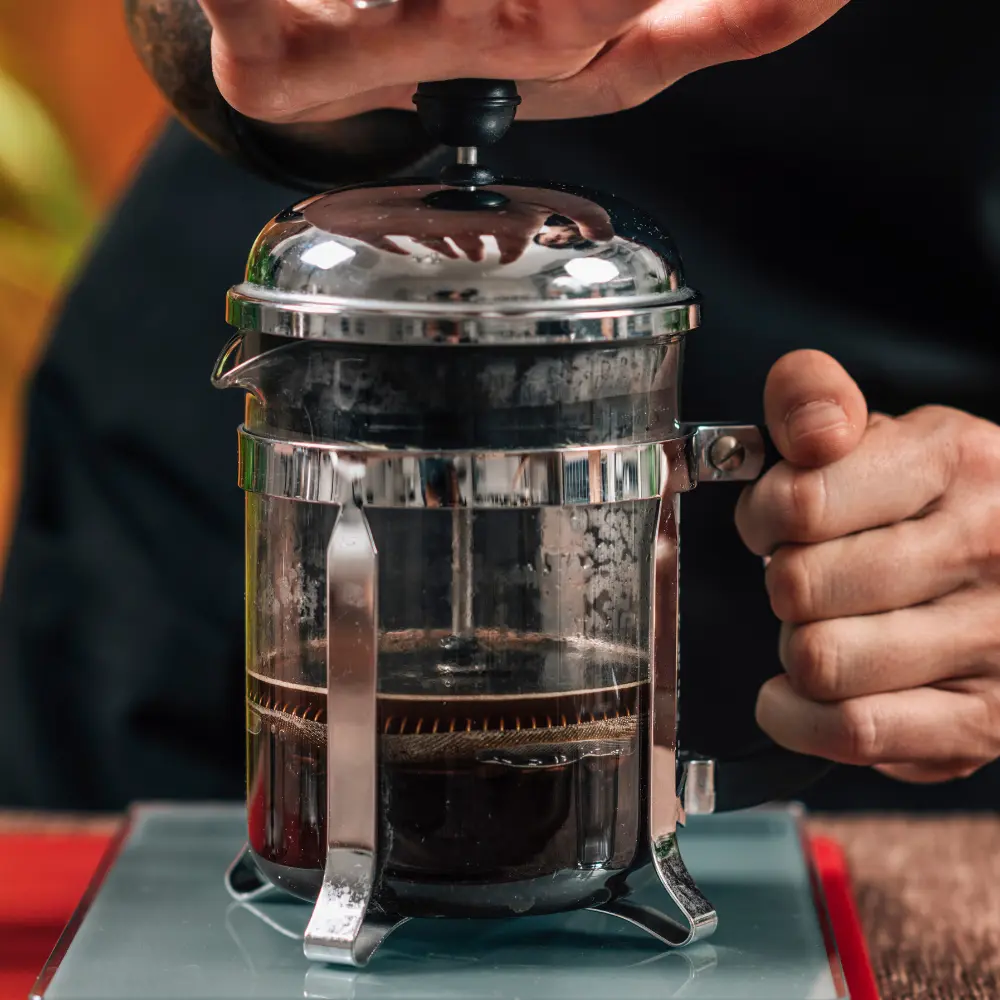
The French Press is an immersion coffee brewing technique in which grounds are steeped in hot water before being separated by a mesh plunger.(1) This method creates a full-bodied, rich coffee with a deep flavor and pronounced mouthfeel. The French Press is a particularly suitable option for darker roasts and coffee with bold, robust flavors.
Pros
- Simplicity: The French Press is an easy-to-use method that requires minimal equipment.
- Flavor richness: The brewing process enables the extraction of oils and fine particles, yielding a more robust and full-bodied cup of joe.
- No paper filters: The French Press employs a reusable metal filter, making it a more environmentally friendly option.
Cons
- Sediment: The metal filter allows some fine particles to pass through, resulting in sediment at the bottom of the cup.
- Cleanup: Cleaning the French Press coffee maker can be slightly more time-consuming than other methods.
Espresso Brewing: Intensity and Aroma
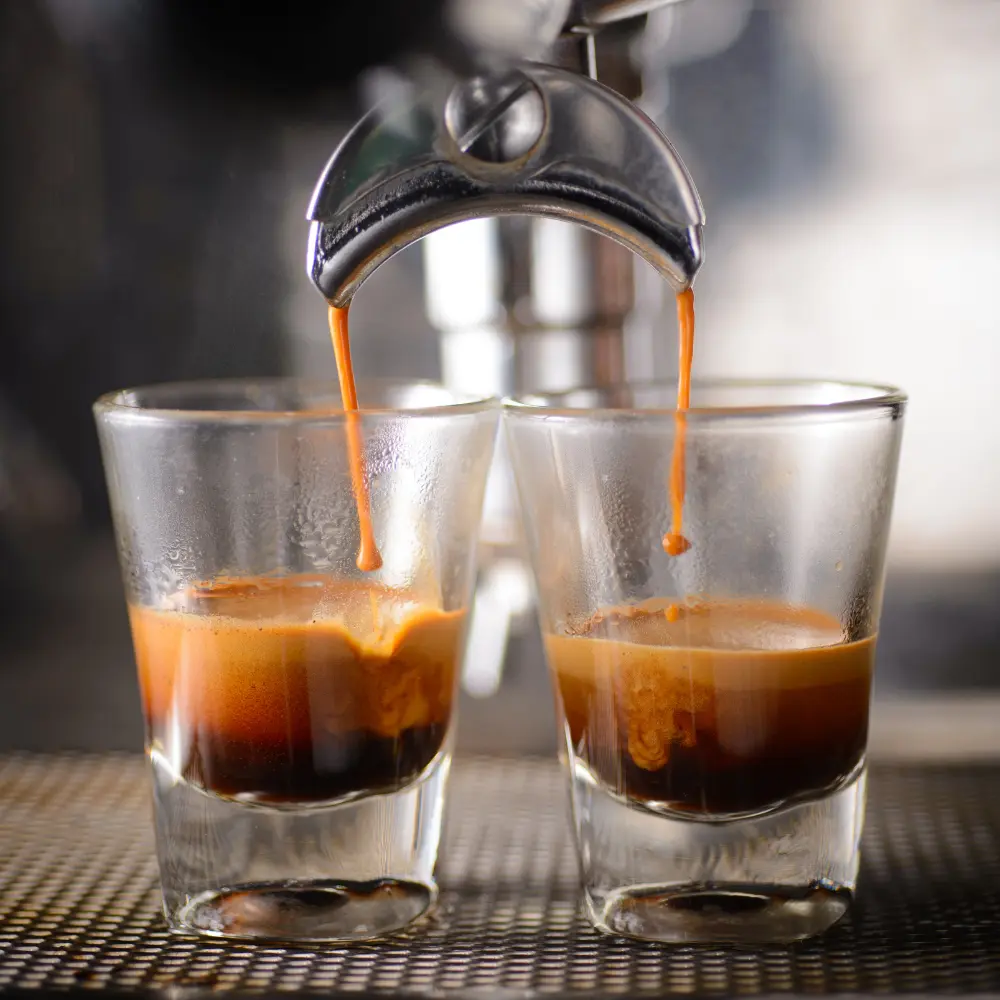
Espresso is a highly concentrated form of coffee produced by forcing hot water through finely-ground coffee under high pressure. The outcome is a small, intense shot of coffee boasting a rich, velvety crema on top. Espresso constitutes the foundation of various popular coffee beverages like cappuccinos, lattes, and Americanos.
Pros
- Intensity: Espresso provides a bold and concentrated coffee experience, comprising rich flavors and aroma.
- Speed: The espresso brewing process is relatively quick, taking only about 25-30 seconds per shot.
- Versatility: Espresso constitutes the base of a vast array of coffee drinks, enabling the creation of an array of delicious beverages.
Cons
- Equipment: Espresso machines can be expensive and require regular maintenance.
- Learning curve: Achieving the perfect espresso shot necessitates practice and skill, as well as understanding the brewing process’s intricacies.
- Space: Espresso machines can be bulky and may consume a significant amount of counter space in your kitchen.
AeroPress Brewing: Speed and Versatility
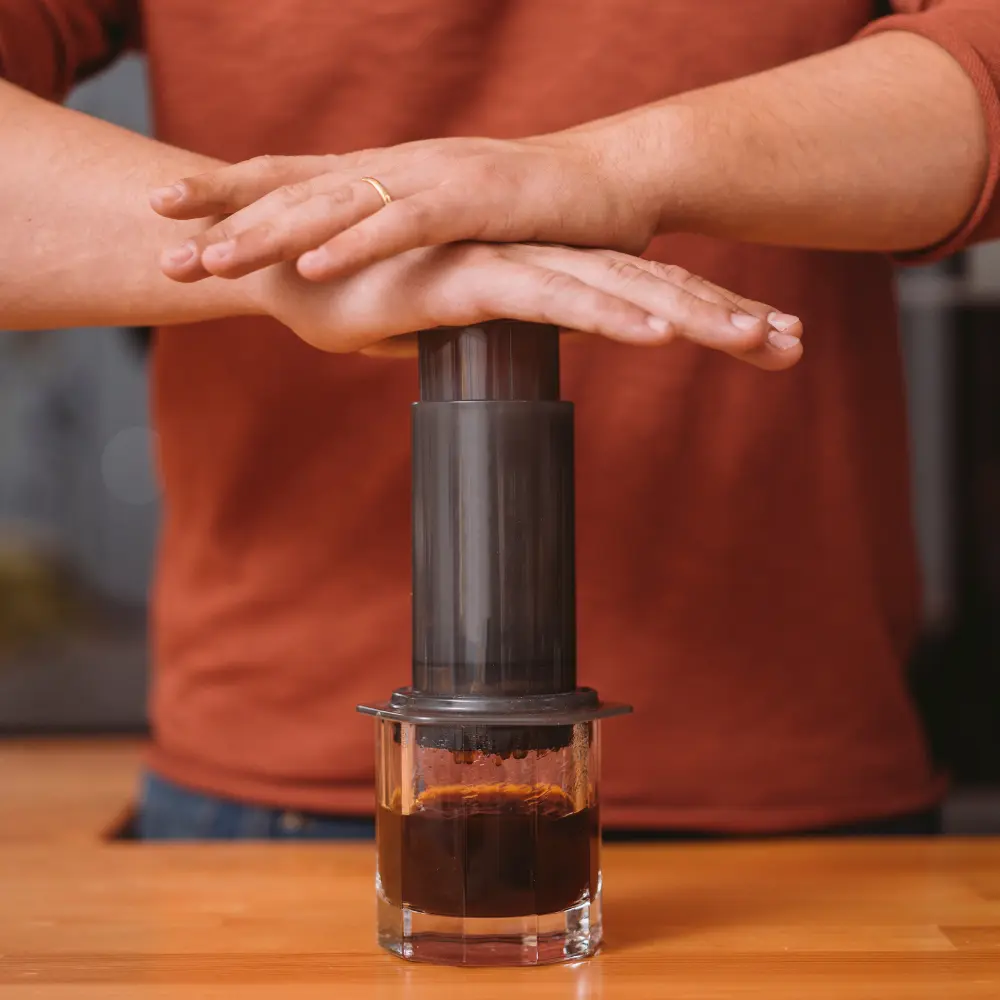
The AeroPress is a relatively recent coffee brewing method that has gained popularity due to its quickness, ease of use, and versatility. It combines elements of both immersion and pressure-based brewing to yield a smooth, rich cup with minimal acidity. The AeroPress is compact and portable coffee maker, making it an excellent option for travel or camping.
Pros
- Speed: The AeroPress can brew a cup in just two or three minutes, making it one of the fastest manual brewing methods.
- Versatility: AeroPress enables experimentation with various brewing variables such as water temperature, grind size, and brewing time, producing an extensive range of cafe styles and flavors.
- Easy to clean: The AeroPress is easy to disassemble and clean, requiring minimal maintenance.
Cons
- Single-serve: The AeroPress is engineered to make one cup at a time, which may not be suitable for those seeking to brew multiple servings.
- Plastic construction: While the AeroPress is made of BPA-free plastic, some coffee enthusiasts may prefer a more conventional or aesthetically pleasing brewing method.
Moka Pot Brewing: Italian Classic
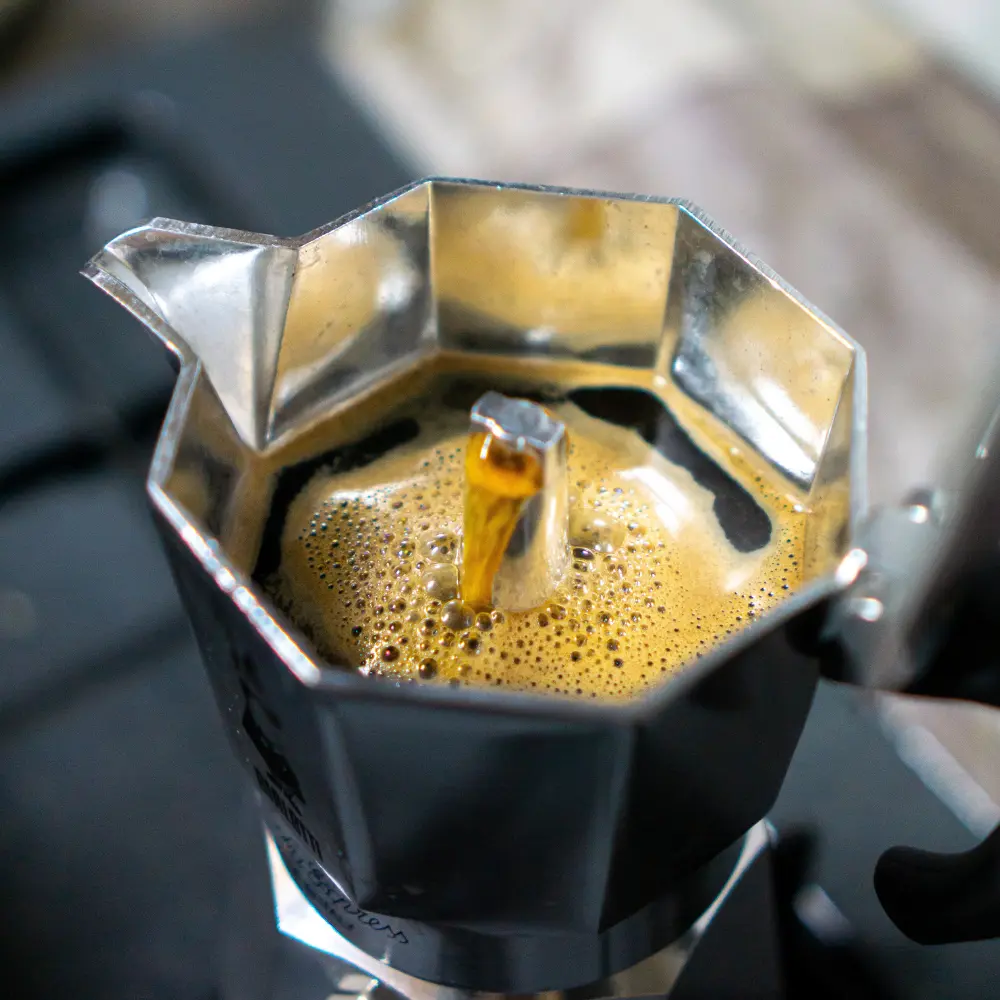
The Moka Pot, also known as a stovetop espresso maker, is a classic Italian coffee brewing method that yields a robust, concentrated coffee similar to espresso. It uses steam pressure to force hot water through coffee grounds, resulting in a rich, bold, and aromatic brew. (2) The Moka Pot constitutes an iconic piece of brewing equipment and a staple in many Italian households.
Pros
- Rich, bold coffee: The Moka Pot produces strong and concentrated coffee, making it an excellent option for those who enjoy bold flavors.
- Durability: Moka Pots are typically made of aluminum or stainless steel, making them durable and long-lasting.
- Aesthetic appeal: The Moka Pot boasts a distinctive and classic design that can add a touch of elegance to your kitchen.
Cons
- Learning curve: Achieving the perfect brew with a Moka Pot necessitates practice and attention to detail.
- Requires a heat source: The Moka Pot is designed to be used on a stovetop, making it less portable than some other brewing methods.
- Not true espresso: While the Moka Pot produces a concentrated coffee, it does not achieve the same pressure as an espresso machine, resulting in a slightly different flavor and texture.
Siphon Coffee: Vacuum Brewing Elegance
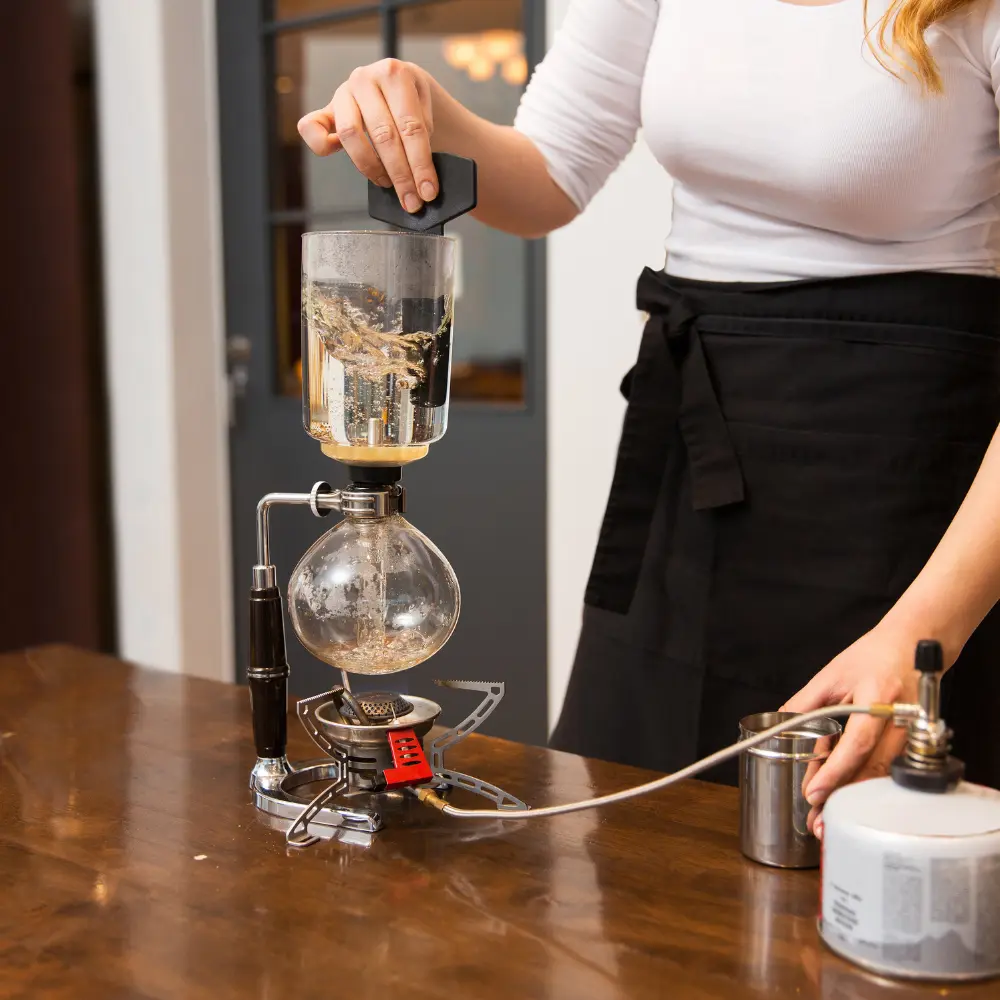
Siphon coffee, also known as vacuum pot or siphon coffee, is a visually stunning brewing method that combines immersion and vacuum principles to create a clean, crisp, and aromatic cup of joe. The siphon coffee maker consists of two chambers, with water in the bottom chamber and coffee grounds in the top. As the water heats up, it creates pressure that pushes the water into the upper chamber, where it mixes with the coffee grounds. Once the heat is removed, the brewed coffee is drawn back into the lower chamber through a filter, creating a unique and flavorful experience.
Pros
- Visual appeal: The siphon brewing process is captivating and theatrical, making it an excellent conversation starter and centerpiece for entertaining.
- Flavor clarity: The vacuum brewing process produces a clean and bright cup of coffee, highlighting the subtle nuances of the coffee’s flavors and aromas.
- Temperature control: The siphon method allows for precise control of water temperature, which can result in a more consistent and well-extracted brew.
Cons
- Complexity: The siphon brewing process can be more complicated than other methods, requiring attention to detail and practice to perfect.
- Cleanup: Cleaning a siphon coffee maker can be time-consuming and requires extra care, as the glass components can be delicate.
- Price: Siphon coffee makers can be more expensive than other brewing methods, making it a more significant investment for coffee enthusiasts.
Turkish Coffee: Traditional and Bold
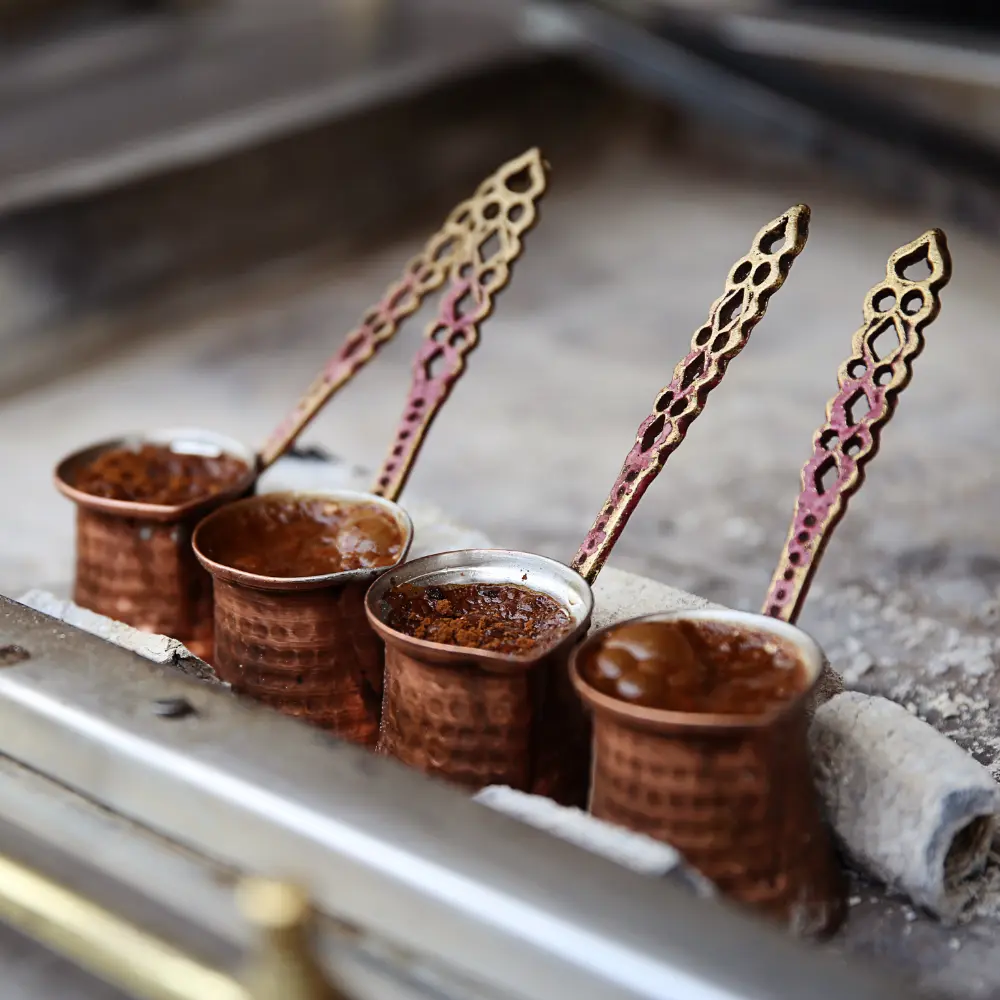
Turkish coffee is a unique and traditional brewing method that has been enjoyed for centuries. It involves finely ground coffee mixed with water and sugar (optional) in a special pot called a cezve or ibrik. The mixture is heated until it froths, and then it’s removed from the heat source and poured into small cups. The result is a bold, strong coffee with a thick and frothy texture, often accompanied by a layer of coffee grounds at the bottom of the cup.
Pros
- Rich flavor: Turkish coffee is known for its bold, intense flavors and unique texture.
- Cultural experience: Enjoying Turkish coffee is an opportunity to experience a centuries-old tradition and connect with a rich cultural heritage.
- Minimal equipment: Brewing Turkish coffee requires only a cezve or ibrik and a heat source, making it a relatively simple and low-cost brewing method.
- Fortune Telling: Turkish coffee is not only a delightful beverage, but it also opens the door to an exciting tradition of fortune-telling. After you finish your cup, the remaining coffee grounds can be read to predict your future. Turkish coffee fortune reading adds a mystical and entertaining aspect to your coffee experience.
Cons
- Unfiltered grounds: Turkish coffee is served with the grounds at the bottom of the cup, which can be an acquired taste for some drinkers.
- Requires a fine grind: Achieving the right texture for Turkish coffee requires a very fine grind, which may necessitate a specialized grinder.
- Less control over brewing variables: The traditional Turkish brewing method offers less control over factors such as water temperature and brewing time compared to other methods.
Drip Coffee: Simplicity and Convenience
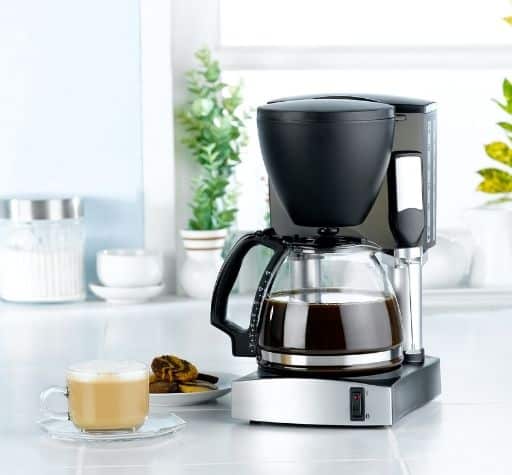
Drip coffee is a widely popular brewing method that involves hot water dripping over coffee grounds held in a paper or metal filter. The water extracts the flavors as it passes through the grounds and collects in a carafe or pot below. Drip coffee makers are available in various sizes and styles, making them a convenient and accessible brewing option for many households.
Pros
- Ease of use: Drip coffee makers are simple to use, often featuring automatic settings that make brewing a breeze.
- Convenience: Drip machines can brew multiple cups at once, making them ideal for serving larger groups or for those who enjoy multiple cups throughout the day.
- Consistency: Drip coffee makers can produce consistent results with minimal effort, especially when using an automatic machine.
Cons
- Limited control: Automatic drip coffee makers offer less control over brewing variables such as water temperature and brewing time compared to manual methods.
- Quality of extraction: Depending on the specific drip machine, the extraction process may not be as precise or thorough as other brewing methods, which can impact the flavor and quality of the final cup.
- Paper filters: Some drip coffee makers use disposable paper filters, which can be less environmentally friendly and may impact the flavor by absorbing some of the natural oils.
Percolator: Old-School Charm
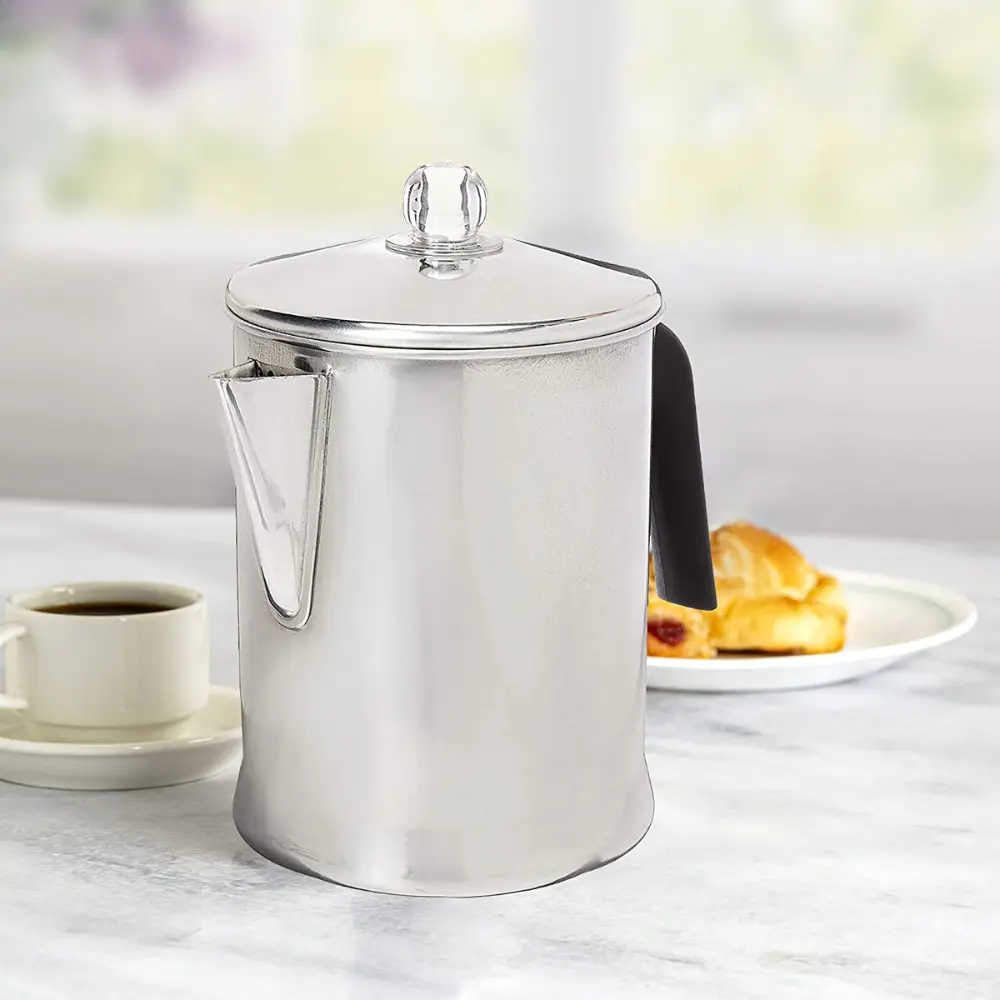
The percolator is a classic coffee brewing method that harkens back to a time before modern coffee makers took center stage. (3) Percolators work by continually cycling boiling water through coffee grounds, using either a stovetop or an electric heating element. The result is a robust, bold coffee with an old-fashioned charm that appeals to those who appreciate a strong, straightforward cup.
Pros
- Nostalgia: The percolator offers a sense of nostalgia and tradition that appeals to many coffee lovers.
- Bold flavor: Percolators produce a strong, full-bodied cup of joe, which is ideal for those who enjoy bold, robust flavors.
- Large quantities: Percolators can brew larger quantities of coffee at once, making them suitable for gatherings or households with multiple coffee drinkers.
Cons
- Over-extraction: The continuous boiling and recirculation of water through the grounds can lead to over-extraction, resulting in a bitter, sometimes burnt taste.
- Limited control: Percolators offer less control over brewing variables, such as water temperature and brewing time, compared to other methods.
- Cleanup: Cleaning a percolator can be more time-consuming and cumbersome than other brewing methods.
Cold Brew: Smooth and Low-Acidity
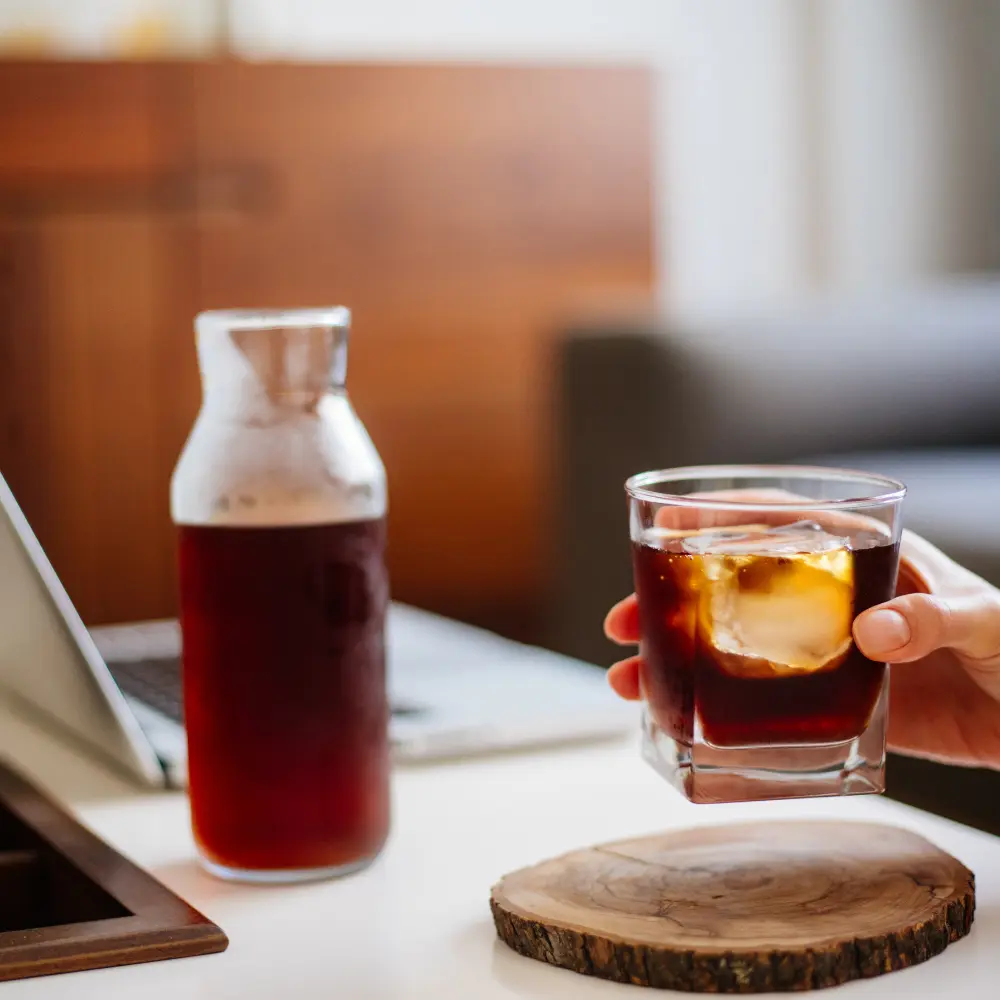
Cold brew is made by steeping coffee grounds in cold or room-temperature water for an extended period, typically 12 to 24 hours. This slow extraction process results in a smooth, full-bodied flavor with lower acidity than its hot-brewed counterparts. Cold brew coffee can be served over ice or mixed with milk or sweeteners, making it a versatile and refreshing option for warm weather or for those who prefer a less acidic cup.
Pros
- Smooth taste: Cold brew is known for its smooth, mellow flavor and low acidity, making it an appealing option for those with sensitive stomachs or who prefer a less acidic taste.
- Versatility: It can be served in various ways, either straight, over ice, or mixed with milk, cream, or sweeteners, allowing for a wide range of flavor profiles and combinations.
- Longevity: It can be stored in the refrigerator for up to two weeks, making it a convenient option for those who want to prepare coffee in advance.
Cons
- Time-consuming: The cold brew process takes significantly longer than other brewing methods, typically requiring at least 12 to 24 hours of steeping time.
- Large quantities: Cold brew is typically made in larger batches, which may not be ideal for those who prefer to brew fresh coffee daily.
- Dilution: Cold brew can become diluted when served over ice, which may require adjustments to the coffee-to-water ratio or the addition of ice made from coffee to maintain the desired strength and flavor.
Nitro Cold Brew: Velvety and Creamy

Nitro cold brew is a variation of traditional cold brew that is infused with nitrogen gas. This infusion creates a smooth, velvety texture and a creamy, cascading head similar to that of a nitro stout beer. Nitro cold brew is typically served on tap and is enjoyed for its unique mouthfeel, creamy texture, and enhanced natural sweetness.
Pros
- Smooth texture: Nitro cold brew is known for its velvety, creamy mouthfeel that sets it apart from traditional cold brew and other coffee beverages.
- Enhanced sweetness: The nitrogen infusion brings out the natural sweetness of the coffee, often reducing the need for added sweeteners.
- Aesthetic appeal: The cascading effect of nitro cold brew, with its rich, creamy head, creates a visually appealing and unique coffee experience.
Cons
- Limited availability: Nitro cold brew is not as widely available as other coffee options and typically requires specialized equipment to serve on tap.
- Higher price: Due to the additional equipment and process involved, nitro cold brew can be more expensive than traditional cold brew or other coffee beverages.
- Not easily made at home: While it is possible to make nitro cold brew at home, it generally requires specialized equipment and can be more complicated than other brewing methods.
Iced Coffee: Quick and Refreshing
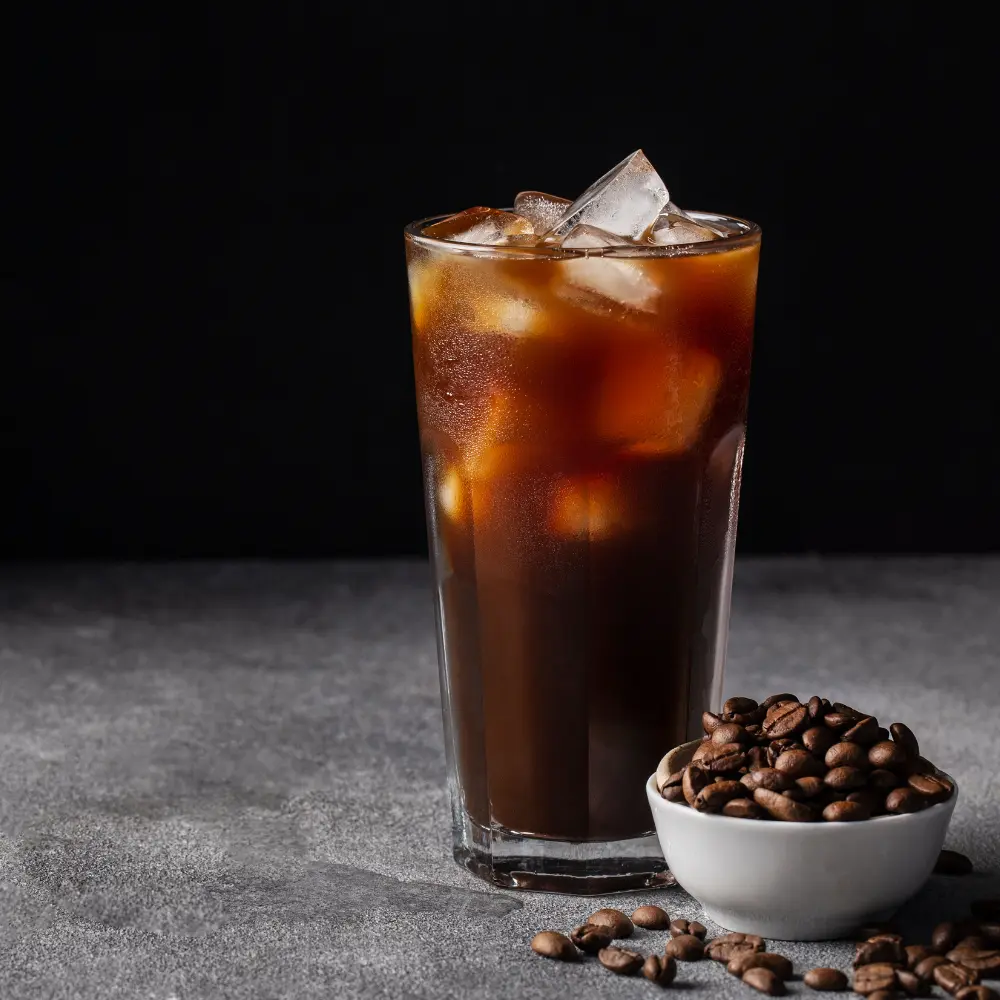
Iced coffee is a popular, refreshing beverage made by pouring hot-brewed coffee over ice or cooling hot coffee and serving it cold. This quick and simple method provides a cooling, caffeinated pick-me-up, making it an ideal choice for warm weather or those in need of a quick, cold coffee fix.
Pros
- Speed: Iced coffee can be made quickly by simply brewing a hot coffee and cooling it over ice, making it an efficient option for those short on time.
- Customizable: Iced coffee can be easily customized with a variety of sweeteners, syrups, and milk options to create a personalized beverage.
- Widely available: Iced coffee is available at most cafes, and even fast-food restaurants, making it a convenient option for those on the go.
Cons
- Dilution: Pouring hot coffee over ice can lead to dilution, resulting in a weaker, more watery flavor. This can be mitigated by using coffee ice cubes or adjusting the coffee-to-water ratio.
- Inconsistent flavor: The flavor of iced coffee can be influenced by factors such as the quality of the ice, the cooling method, and the freshness of the hot coffee used.
- Less nuanced: Iced coffee may not capture the same depth of flavor and complexity as other cold coffee methods, such as cold brew, due to the quick cooling process.
Essential Coffee Brewing Equipment
To brew coffee that rivals your favorite café, it’s essential to have the right equipment at home. From grinders to coffee makers and accessories, investing in quality coffee brewing equipment can make all the difference in the taste and aroma of your freshly brewed coffee. Let’s explore the essential items you’ll need to create the perfect cup.
Choosing the Right Grinder
Grinding your beans just before brewing is crucial to brewing exceptional coffee. A high-quality grinder allows you to achieve a consistent grind size, which plays a significant role in the extraction process. There are primarily two types of grinders to take into account: burr grinders and blade grinders.
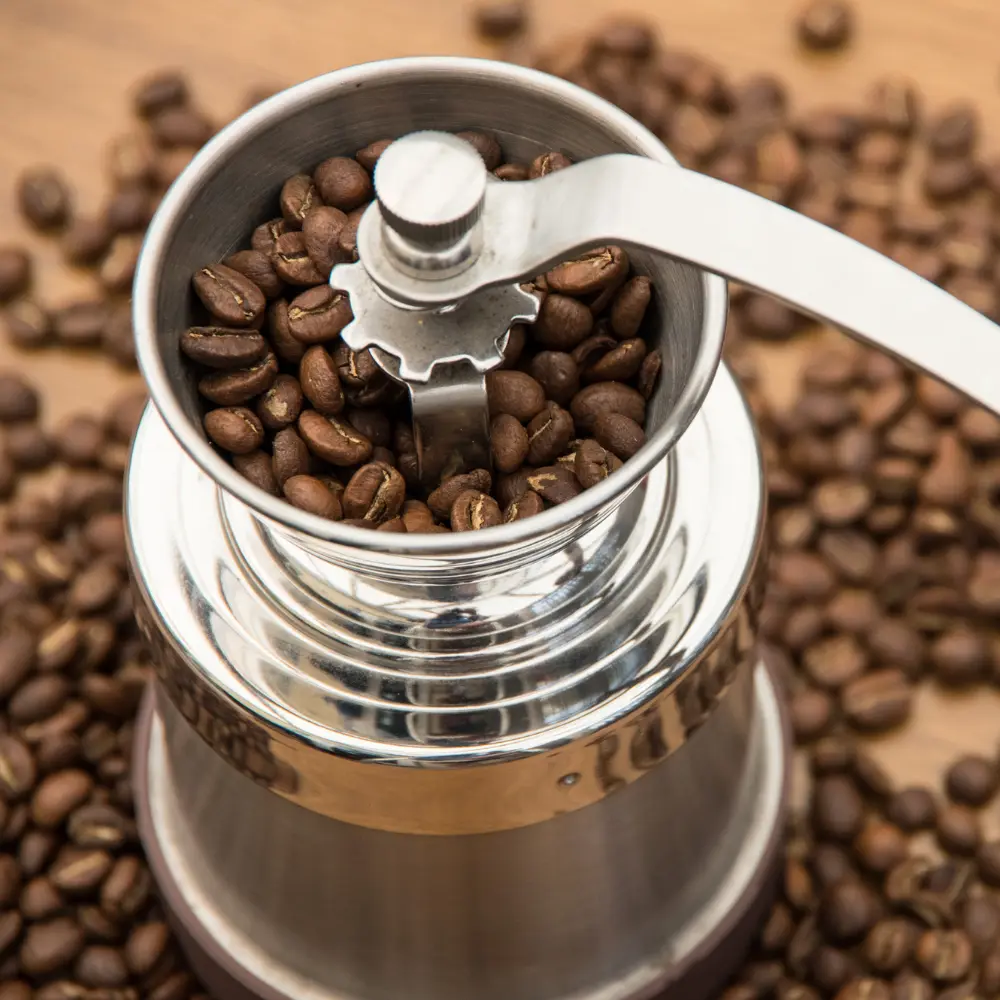
Burr grinders employ two rotating, abrasive elements (burrs) to break down coffee beans into a consistent size. This type of grinder offers more control and consistency, making it the preferred choice for many coffee enthusiasts.
Blade grinders, on the other hand, use a spinning blade to chop the coffee beans. This method can produce an uneven grind, which can negatively impact the extraction and flavor of your coffee. While blade grinders are generally more affordable, investing in a burr grinder is highly recommended for those serious about their coffee brewing experience.
Investing in a Quality Coffee Maker
The right coffee maker can significantly influence the quality of your fresh-brewed coffee. Depending on your preferences and desired brewing method, various options are available, including manual pour-over setups, drip coffee makers, espresso machines, and French presses, among others.
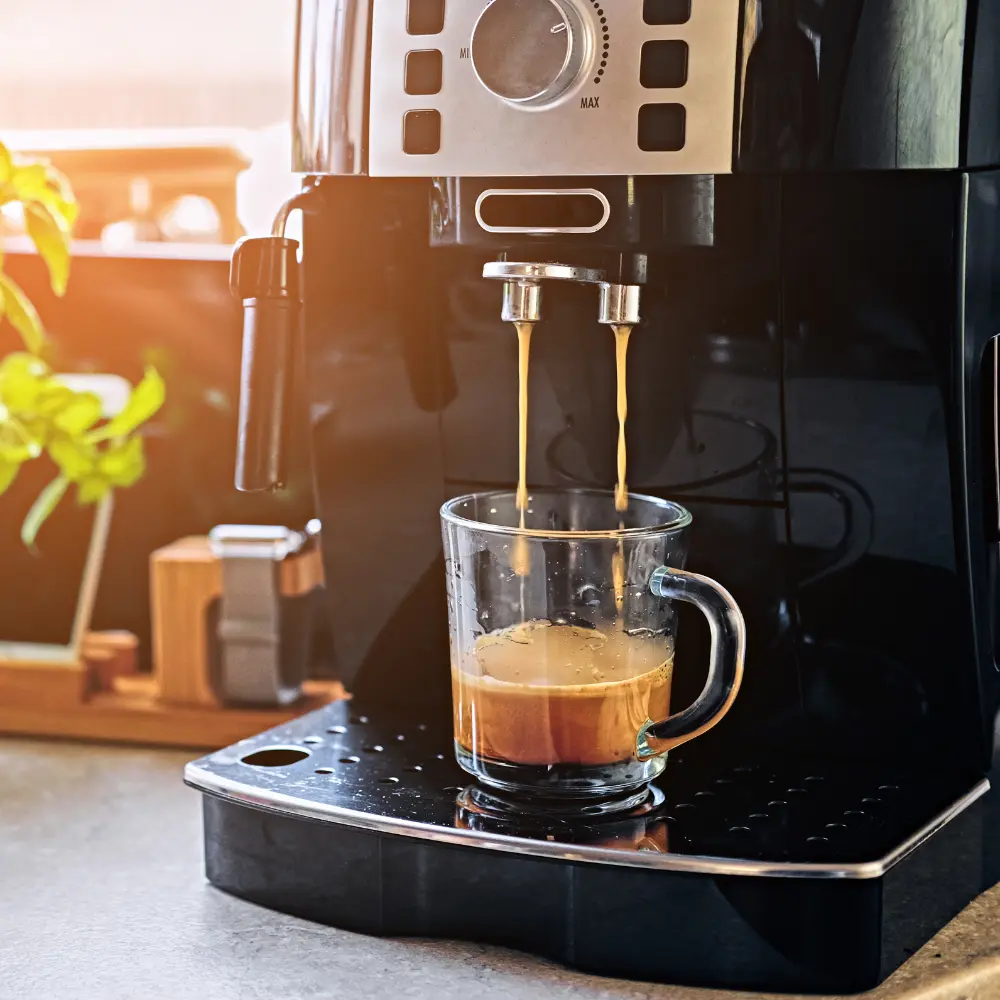
When selecting a coffee maker, consider factors such as brewing capacity, ease of use, temperature control, and the ability to customize brewing parameters. A high-quality coffee maker should consistently produce a delicious cup while offering a balance between convenience and control over the brewing process.
Accessories for the Coffee Connoisseur
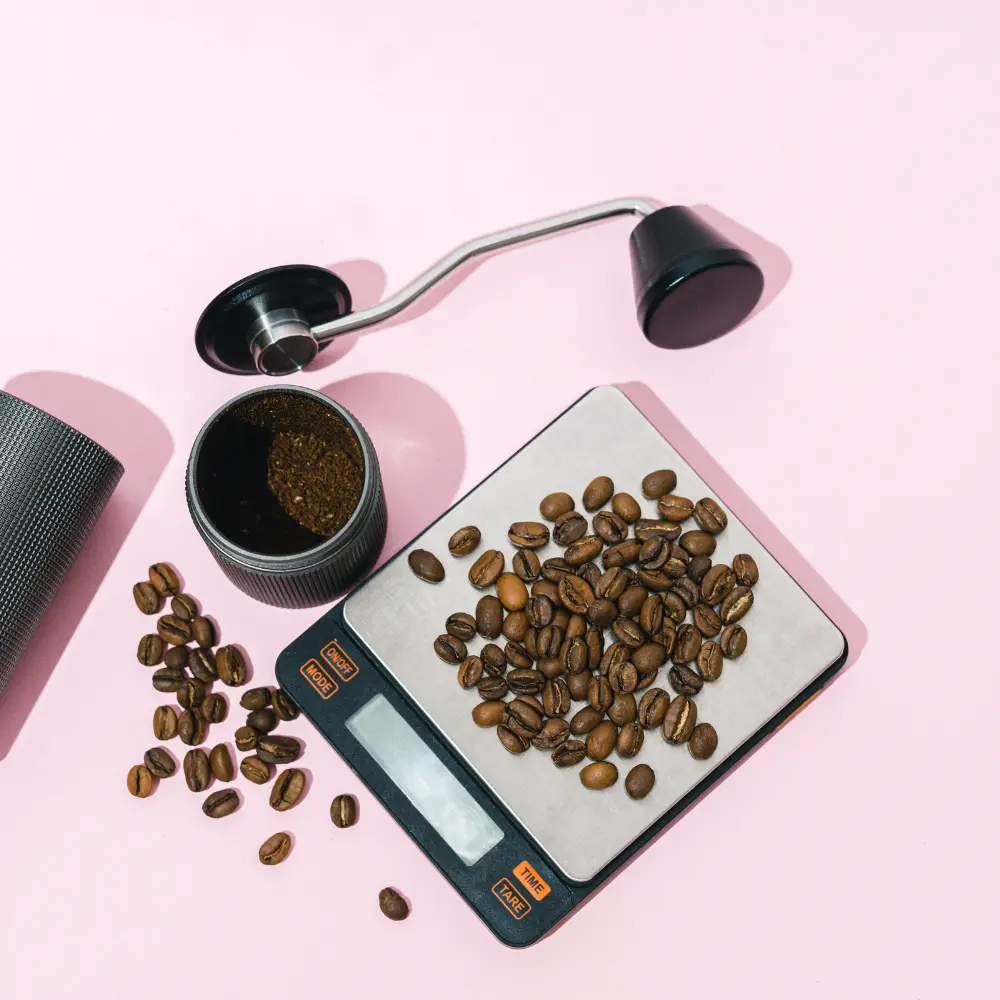
In addition to a grinder and coffee maker, several accessories can enhance your coffee brewing experience:
- Scale: A precise scale will help you measure your coffee and water accurately, ensuring consistent brewing ratios and a more balanced flavor.
- Gooseneck kettle: A gooseneck kettle offers better control over pouring speed and accuracy, which is essential for manual brewing methods like pour-over.
- Thermometer: Monitoring the water temperature during brewing can help you achieve the optimal extraction, as different brewing methods require different temperatures.
- Coffee storage container: Proper coffee storage is crucial to maintaining freshness and flavor. Look for airtight, opaque containers that protect your beans from light, air, and moisture.
- Cleaning supplies: Regular maintenance of your coffee equipment is vital to maintaining optimal performance and taste. Invest in cleaning brushes, descaling solutions, and other tools to keep your coffee maker in top shape.
By investing in quality equipment and mastering how to brew coffee at home, you’ll be well on your way to enjoying the perfect cup of freshly brewed coffee every day.
Expert Tips and Techniques
Brewing the perfect cup of fresh-brewed coffee is an art that combines skill, knowledge, and a bit of experimentation. In this section, we’ll dive into expert tips and techniques that can elevate your coffee brewing experience and help you consistently achieve a delicious and satisfying cup of coffee.
Perfecting Your Grind Size
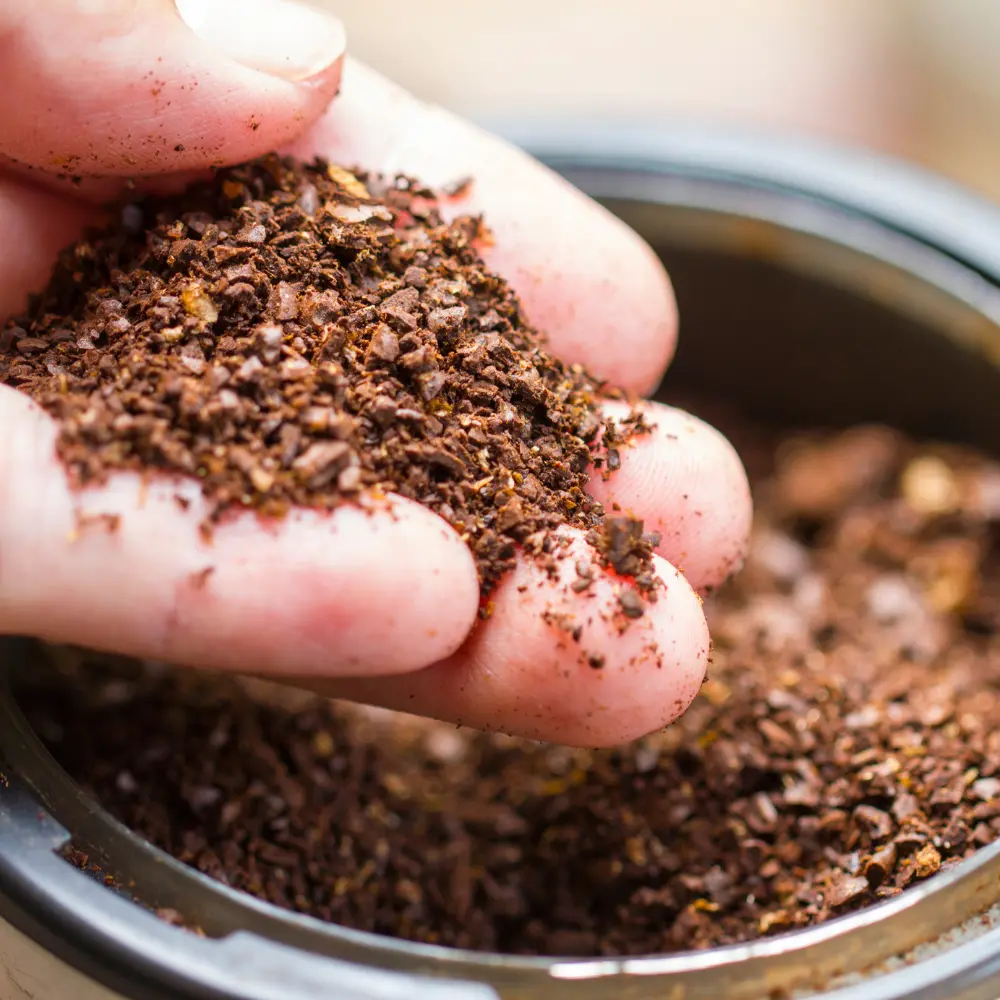
The grind size of your coffee plays a crucial role in the extraction process. A consistent and appropriate grind size allows for optimal extraction, ensuring a well-balanced and flavorful cup. Grind size can vary depending on the brewing method you’re using:
- Coarse: Ideal for French press, percolator, and cold brew methods.
- Medium-coarse: Best suited for pour-over, Chemex, and AeroPress (longer brew times).
- Medium: Works well with drip coffee makers and some pour-over methods.
- Medium-Fine: Perfect for espresso machines and AeroPress (shorter brew times).
- Extra fine: Used primarily for Turkish coffee.
To perfect your grind size, experiment with different settings on your grinder and observe how the changes impact the taste and extraction of your freshly brewed coffee.
Perfecting the Coffee-to-Water Ratio
If you want to brew a cup of coffee that is both flavorful and satisfying, then you need to get the coffee-to-water ratio right. A balanced ratio is crucial to prevent over or under-extraction of the flavors. Although the ideal coffee-to-water ratio depends on your personal preference and brewing method, as previously mentioned it’s recommended to start with a 1:15 or 1:18 ratio (1 part coffee to 15 or 18 parts water) for most brewing methods.
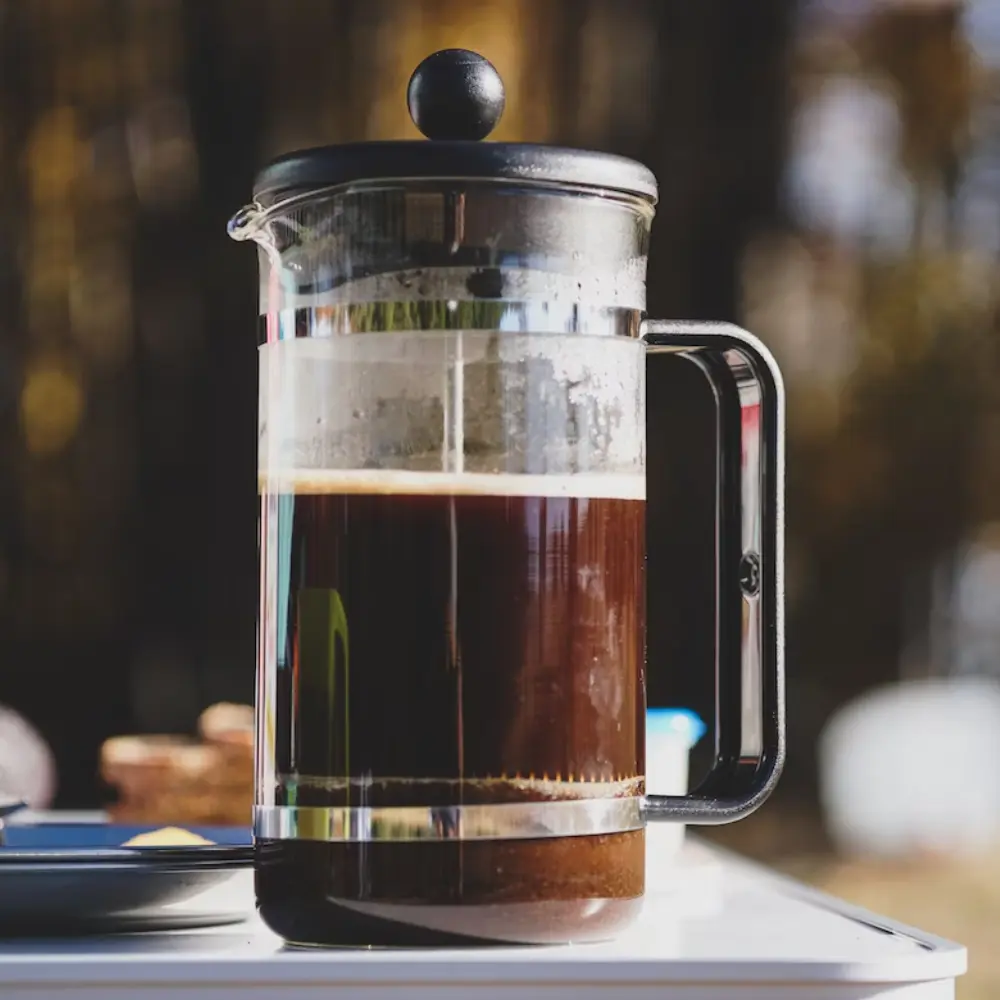
To fine-tune your brewing process and find your perfect ratio, begin with the recommended guidelines, and make small adjustments as needed. Using a digital scale to measure both coffee and water accurately can significantly improve your consistency.
Timing and Temperature for the Best Extraction
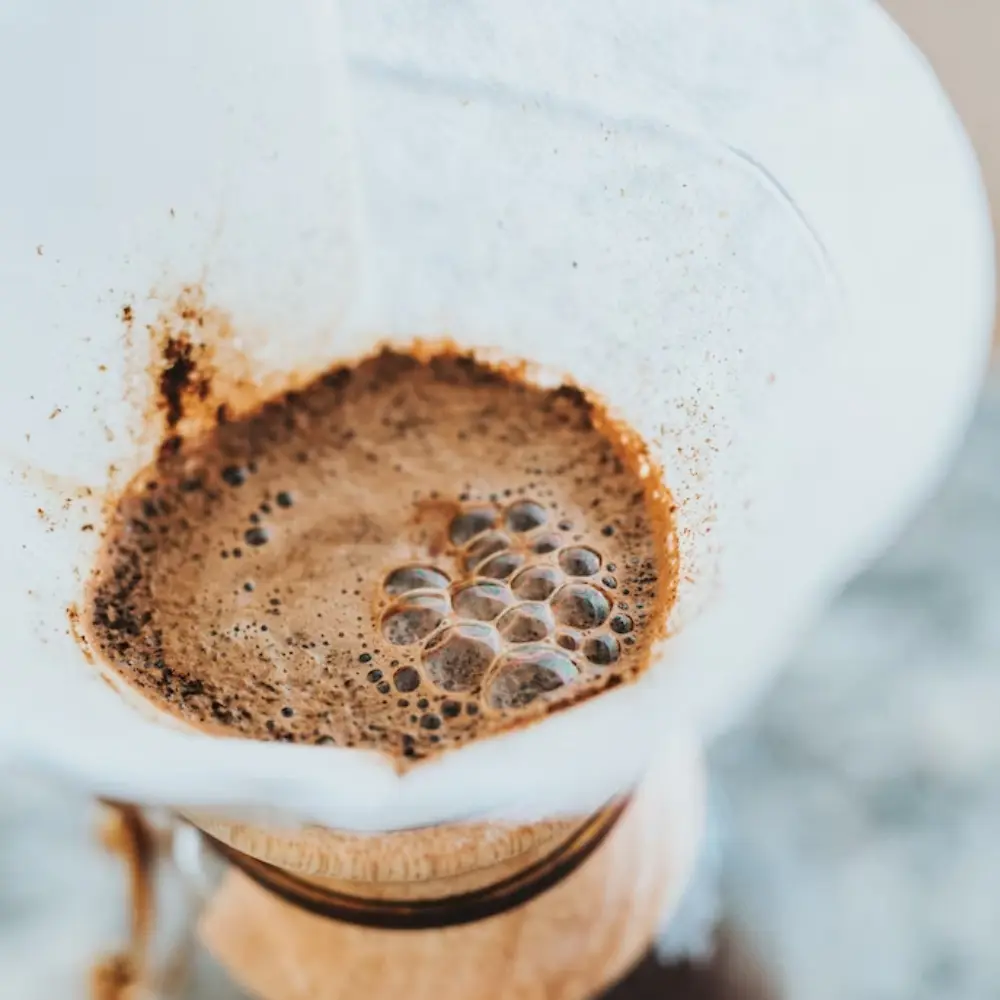
The brewing time and water temperature play a vital role in the coffee extraction process. Each brewing method requires different timing and temperature to achieve optimal extraction. Here are some guidelines to follow:
- Pour-over and drip coffee: The recommended water temperature is between 195°F (91°C) and 205°F (96°C), with a brewing time of 3-4 minutes for pour-over and 5 minutes for drip coffee.
- French press: The suggested water temperature is around 199–205 °F (93–96 °C), with a steeping time of 4 minutes.
- AeroPress: The optimal water temperature ranges between 175°F (80°C), with a brewing time of 2-3 minutes, depending on the grind size.
- Espresso: The ideal water temperature is around 197°F and 205°F (90 and 96°C), with an extraction time of 25-30 seconds.
- Cold brew: As this method uses cold or room-temperature water, aim for a steeping time of 12-24 hours.
Experimenting with brewing times and temperatures can help you perfect your coffee brewing process and achieve a perfect cup of java every time. Don’t forget to take notes on your findings to guide your future brewing endeavors.
The Art of Coffee Tasting
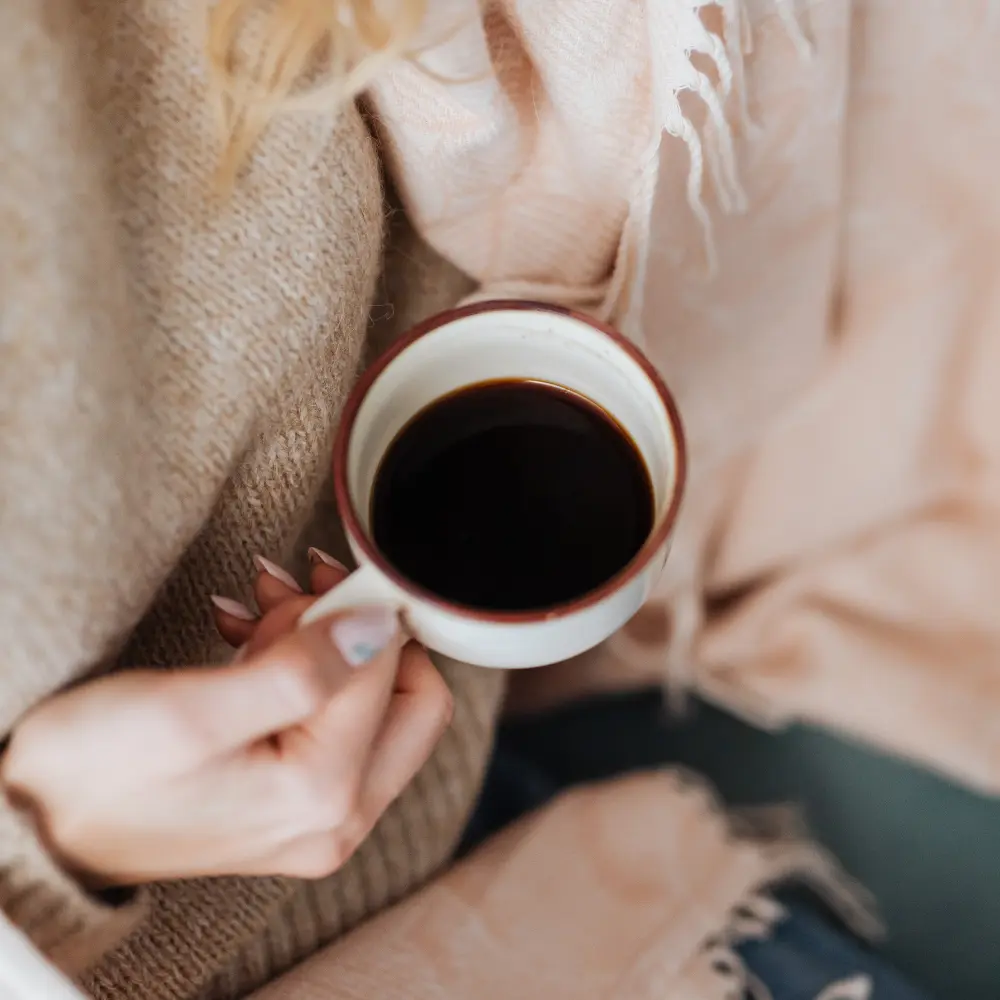
Coffee, much like wine, is a complex beverage that boasts a wide range of flavors and aromas. Learning to appreciate and understand these subtleties can significantly enhance your coffee experience and deepen your appreciation for the world of coffee. In this section, we’ll delve into the art of coffee tasting, including developing your palate, coffee cupping, and pairing coffee with food.
Developing Your Palate
Developing your palate for coffee entails training your senses to identify and appreciate the various flavors, aromas, and textures that make up a cup of coffee. To start honing your palate, try the following:
- Taste a variety of coffees: Experiment with different beans, roast levels, and brewing methods to expose your palate to a broad range of flavors and aromas.
- Take notes: Record your coffee-tasting experiences, paying attention to specific flavors, aromas, and textures that stand out. This will help you develop a vocabulary for describing coffee and improve your ability to identify and recall specific qualities.
- Compare and contrast: Taste different coffees side by side to help you discern subtle differences and similarities.
- Engage your senses: Focus on the aroma, flavor, and mouthfeel of the coffee, paying attention to how these elements change as the coffee cools.
- Practice: Developing your palate takes time and practice. Be patient and enjoy the journey of discovering the world of coffee.
Coffee Cupping: A Sensory Experience
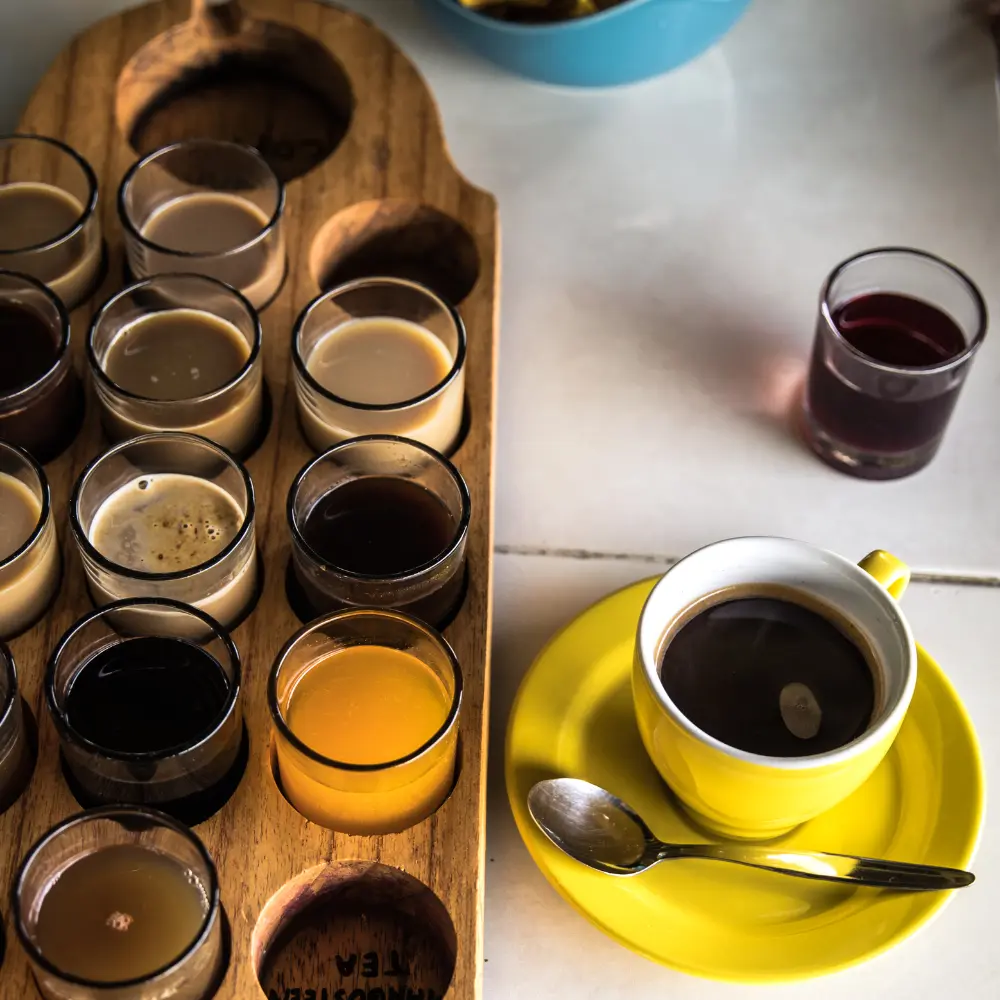
Coffee cupping is a process used by coffee professionals to evaluate and compare the quality, flavor, and aroma of different coffee beans. By highlighting the unique characteristics of each coffee, cupping enables objective assessment and provides a sensory experience. If you’re interested in performing a coffee cupping at home, follow these simple steps:
- Prepare the samples: Grind equal amounts of each coffee you plan to taste, aiming for a medium-coarse grind size.
- Add hot water: Pour hot water (around 200°F or 93°C) over the coffee grounds, ensuring they are fully saturated. Let the coffee steep for 4 minutes.
- Break the crust: After the steeping time, gently break the crust of coffee grounds that have formed on the surface using a spoon, and smell the aroma released during this process.
- Skim and slurp: Remove any remaining grounds from the surface and use a spoon to slurp the coffee, aerating it in your mouth to enhance the flavors and aromas.
- Evaluate: Assess the coffee based on its aroma, flavor, body, acidity, and aftertaste. Take notes on your impressions and compare your findings with other samples.
Pairing Coffee with Food
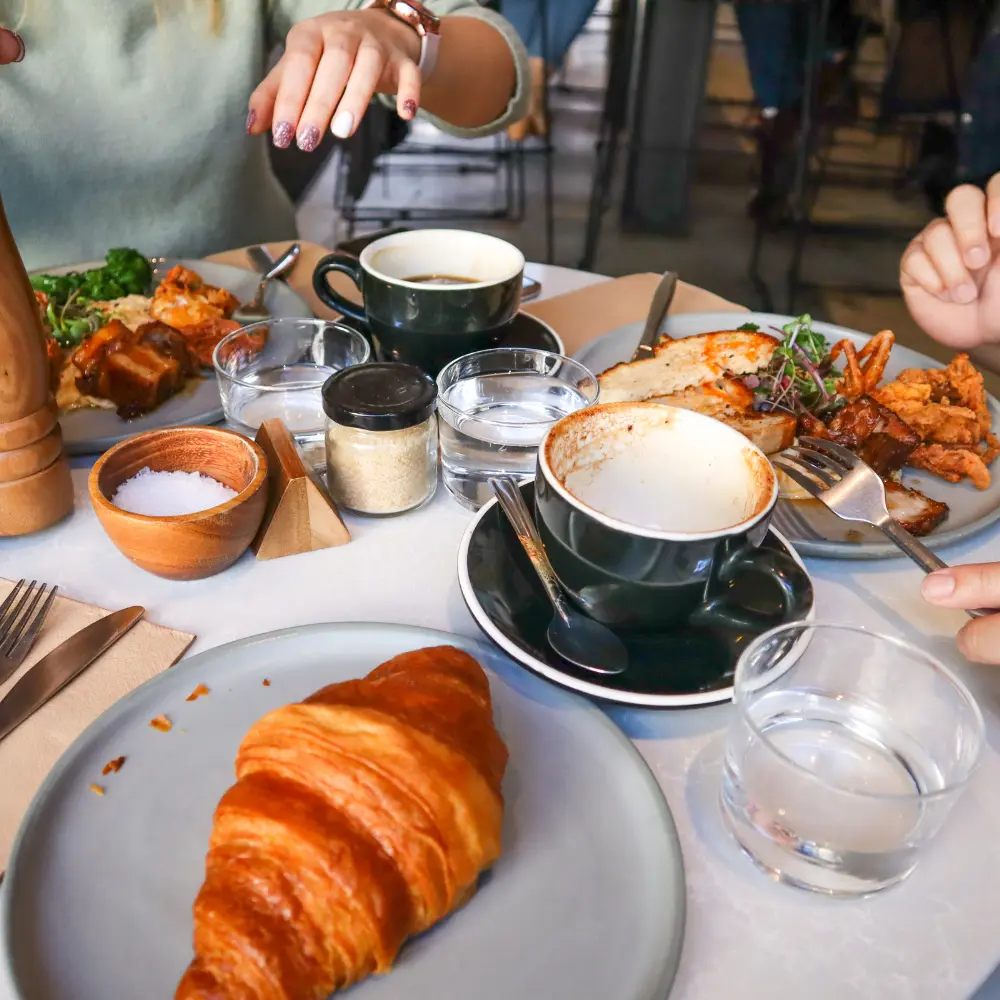
Pairing coffee with food can enhance the flavors and enjoyment of both the coffee and the dish. Here are some tips to consider when pairing coffee with food:
- Complement or contrast: Look for flavor combinations that either complement or contrast with each other. For example, a fruity and acidic coffee might pair well with a rich and creamy dessert, while a nutty and chocolatey coffee could complement a buttery pastry.
- Match intensity: Choose a coffee with a flavor intensity that matches the dish, so that neither overpowers the other.
- Experiment: Don’t be afraid to try unconventional pairings and explore new flavor combinations. The world of coffee and food pairing is vast and open to interpretation.
By embracing the art of coffee tasting, you can learn to appreciate the diverse flavors and aromas present in coffee, enhance your overall coffee experience, and deepen your connection to this beloved beverage.
Conclusion
In conclusion, mastering the art of coffee brewing can elevate your daily fresh-brewed coffee experience and deepen your appreciation for this beloved beverage. By exploring various brewing methods, understanding the science behind coffee extraction, Implementing expert tips, and honing your coffee-tasting skills, you can unlock the full potential of your coffee beans. With persistence and passion, you’ll soon become a coffee connoisseur capable of brewing and appreciating the finest fresh brewed coffee.
FAQ
How does the size of the coffee grind impact the extraction process?
The extraction of coffee is influenced by the size of the grind, which, in turn, alters the surface area of the coffee grounds. Finer grinds increase the surface area and facilitate faster extraction, whereas coarser grinds decrease the surface area and result in slower extraction.
What is the contrast between single-origin and blended coffee beans?
While single-origin coffee beans originate from a particular region or farm, blended coffee beans are a concoction of beans from different origins, which are combined to create a specific flavor profile.
What measures can one take to enhance the taste of their coffee at home?
To elevate the taste of coffee at home, one can use high-quality freshly roasted beans, grind just before brewing, utilize clean filtered water, and experiment with different brewing methods and ratios.
What are some practices that are sustainable for both coffee brewing and consumption?
To promote sustainability in coffee production and consumption, one can endorse fair trade and organic coffee, employ reusable filters and mugs, brew only the required quantity, and recycle or upcycle packaging and containers.














